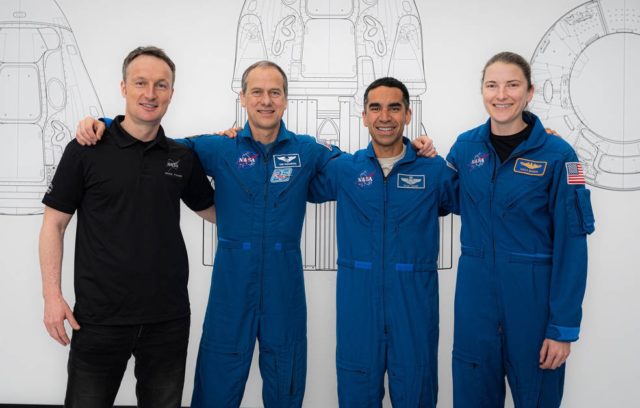Washington: NASA and SpaceX have postponed their Crew-3 launch to the International Space Station to November 3, due to bad weather.
SpaceX Crew Dragon spacecraft’s new launch aboard Falcon 9 rocket is now targeted for 1.10 a.m. on November 3 from Launch Complex 39 at the agency’s Kennedy Space Center in Florida.
Weather conditions along the ascent corridor are expected to improve, and the forecast predicts an 80 per cent chance of favourable weather conditions at the launch site, NASA said.
The launch was earlier planned for October 31 but was postponed “due to a large storm system meandering across the Ohio Valley and through northeastern US this weekend, elevating winds and waves in the Atlantic Ocean along the Crew Dragon flight path”, NASA said in a statement.
The Crew-3 include NASA astronauts Raja Chari, mission commander, Tom Marshburn, pilot, and Kayla Barron, mission specialist and ESA (European Space Agency) astronaut Matthias Maurer, also a mission specialist.
The astronauts are scheduled for a long-duration science mission aboard the orbiting laboratory, living and working as part of what is expected to be a seven-member crew.
The Crew-3 will arrive at the space station later the same day at about 11 p.m. on November 3.
Aboard Dragon with the crew will be more than 400 pounds of supplies and hardware, including over 150 pounds of which they will use to conduct experiments aboard the space station. Here is some of the research riding with them into low-Earth orbit.
The research includes a Smartphone Video Guidance System (SVGS) — a low-cost, commercial-off-the-shelf implementation of advanced sensors designed for automated rendezvous and capture of spacecraft; Food Physiology investigation to see how the immune system functions during spaceflight; monitoring astronauts health for science and efficient exercise in space using electrical muscle stimulation (EMS), a strengthening technique in which muscles are stimulated by applying electrical impulses.
In addition to the experiments flying with them aboard Dragon, the Crew-3 astronauts are also scheduled to conduct many additional experiments and technology demonstrations during their mission.
Crew-3 is crucial for the testing of new upgrades to the space station’s Environmental Control and Life Support System (ECLSS), including the newly installed toilet, the Brine Processing Assembly, carbon dioxide scrubbers, and two new hydrogen sensors slated to arrive aboard a SpaceX Cargo Dragon in late December.
They also plan to test the printing of fiber optics and a handheld bioprinter and to study concrete hardening among some of the more than 200 investigations during their time in orbit, NASA said.




 Ms Kalinga
Ms Kalinga